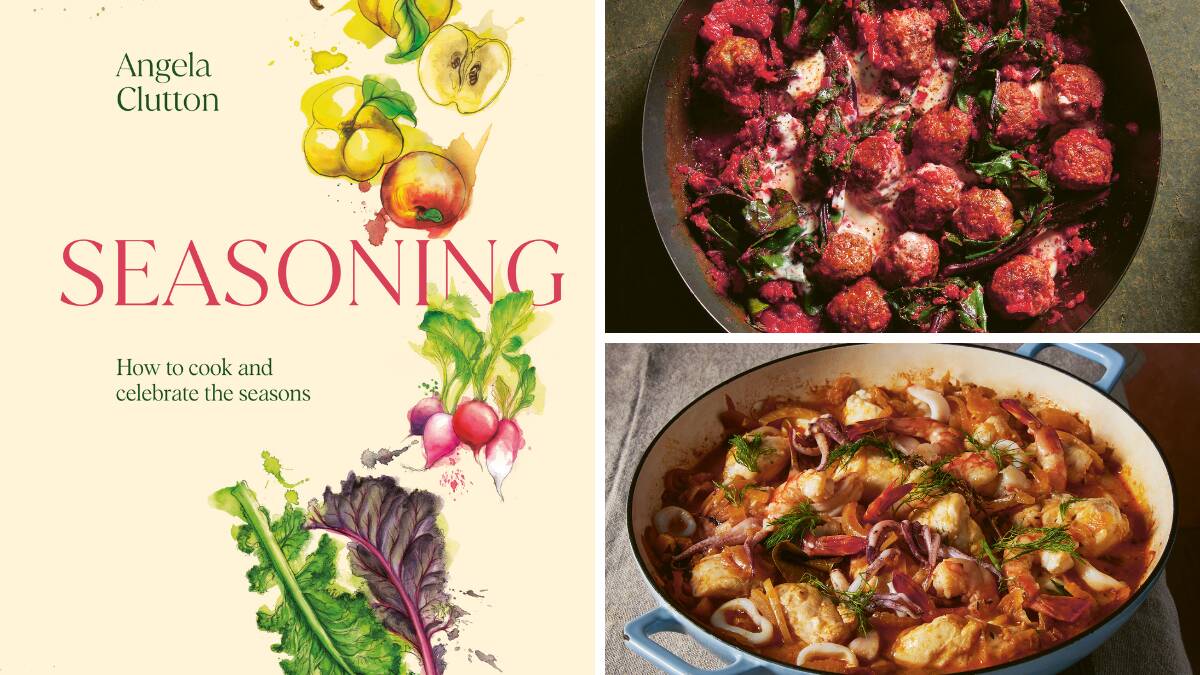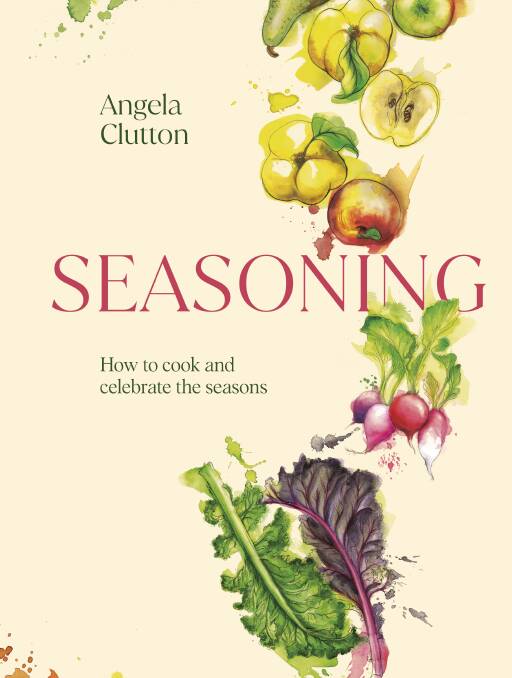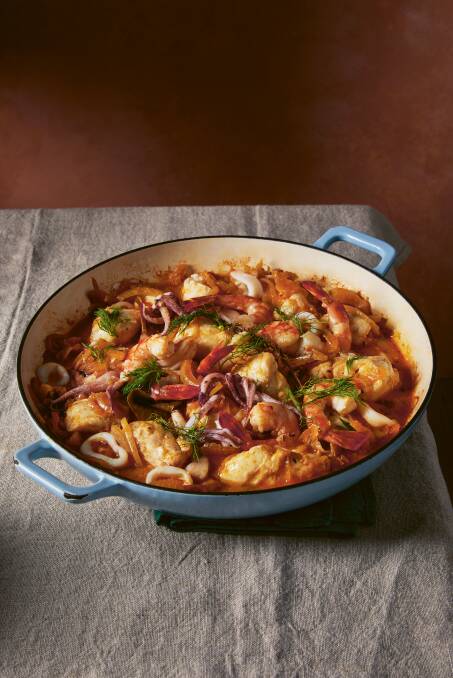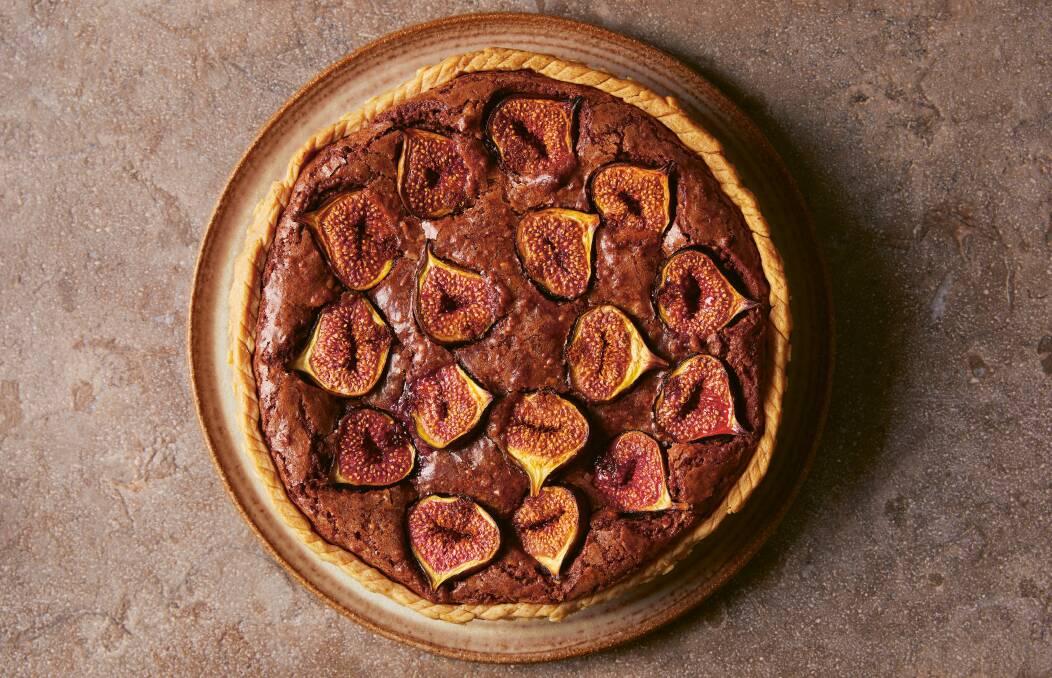Bring the rhythms of the seasons into your kitchen with this timeless guide to cooking and celebrating produce, all year round.
Seasoning spans the four seasons of the year, with insights into more than 50 vegetables and fruits.
Award-winning food writer Angela Clutton explores their seasonality, offering tips on shopping and storing, countless ways to use them, flavour partners and how to minimise waste.
This book illustrates how embracing seasonality is about understanding the cycles of the land and the climate - even, or especially, as it changes - and how they have the ability to make things taste the best possible versions of themselves.


- Seasoning: How to cook and celebrate the seasons, by Angela Clutton. Murdoch Books. $55.
Zarzuela (fennel and fish stew)

This is a go-to dish in my house. Most often on Saturday night rotation, when I want to cook and eat something I can prepare in advance or that needs very little finishing after our Saturday-night ritual of a cocktail (or two). Its marriage of fennel and aromatics hits the sweet spot of the fennel flavour spectrum: there is just enough going on to balance out fennel's dominance, yet somehow also let it shine. Hake is my preferred choice of white fish, but do switch that up for whatever is fresh and seasonal. The essential accompaniment is good bread for mopping up the juices.
Ingredients
2 onions
3 tbsp olive oil
3 garlic cloves
1 fennel bulb
2 bay leaves
2 thyme sprigs
1 tsp smoked paprika
250ml white wine or dry vermouth
800g filleted skinless loin of hake or other white fish
2 prepared squid, including wings and tentacles
8 raw king prawns
salt and black pepper
Method
1. Peel the onions, cut in half and slice into thin half-moons. Heat the oil in a large deep frying pan or casserole, then add the onions and cook gently with a lid on, so they soften but do not colour. Check the onions regularly to make sure they aren't catching on the bottom of the pan.
2. Meanwhile, peel and crush the garlic cloves. Prepare the fennel: Remove and set aside the fronds, trim off the upper stalks and keep for stock, then thinly slice the fennel bulb into rounds. When the onions are nearly tender, add the garlic and fennel to the pan. Mix, season with salt, put the lid back on and sweat the vegetables for about five minutes, or until the fennel is softening. Stir in the bay, thyme and paprika, pour in the wine/vermouth and let it bubble for a minute, then add 500ml water. Season and gently simmer with a partial lid on for 20 minutes.
3. Remove the herbs and either carry straight on or set the sauce aside if making ahead of time. Reheat, if it has cooled.
4. Cut the hake into chunks and stir into the sauce. Cut the squid into rings and add those too. Turn the heat up and cook for five minutes. Sit the squid wings on top, cut each set of tentacles in half and add to the pan, and lastly sit the prawns on top. Cover and leave for five minutes for all the fish to cook through. It's ready when the prawns are pink.
5. Scatter over the fennel fronds, give it plenty of black pepper and serve straight away.
Serves 4-6 as a main.
Baked za'atar meatballs with tomato sauce and beetroot tips

This is not just a terrific dinner, but shows off just how beetroot stalks and leaves are delicious and useful in their own right, too. This dish would certainly be nice enough without the beetroot stalks cooked into the base of the dish, or indeed the beetroot leaves added for the finish - but not nearly so good as with them. Serve with plenty of couscous, stirred through with lots of chopped herbs, salt and a squeeze of lemon.
Ingredients
For the sauce:
2 red onions
3 tbsp olive oil
4 garlic cloves
stalks and leaves from 6 beetroots
5 anchovy fillets, drained of oil
1 x 400g tin chopped tomatoes
2 tbsp grated fresh horseradish
2 tbsp creme fraiche
salt and black pepper
For the meatballs:
1 red onion
2 garlic cloves
400g minced beef or lamb
1 tbsp za'atar
80g breadcrumbs
1 egg
2 tbsp olive oil
salt and black pepper
Method
1. Make the sauce first: Peel and chop the onions. Heat the olive oil in a large deep frying pan and cook the onions over a gentle heat until starting to tenderise and taking on a little colour. Peel and finely chop the garlic cloves, and add those, too.
2. While they are cooking, separate the beetroot leaves from the stalks. Sit the leaves in very cold water to keep them perky. Finely chop the stalks, and add to the frying pan. Let them cook down for five minutes, stirring, then add the anchovies and chopped tomatoes. Rinse out the tomato tin with water and add that to the pan, too. Season. Simmer for 20 minutes. Set aside while you make the meatballs.
3. For the meatballs: Preheat the oven to 210 degrees.
4. Peel and grate the onion and garlic into a bowl, add the minced meat, za'atar and breadcrumbs, and season well. Beat the egg and add, then use your hands to bring the mixture together. Divide into 20 equal pieces, rolling them into balls as you go. Sit the meatballs on a baking tray, drizzle over the oil and bake in the oven for 15 minutes.
5. For the last five minutes of the meatballs' baking time, put the sauce back on the heat and stir in the horseradish. Lift the beetroot leaves out of the water and sit on kitchen paper to dry, then just before the meatballs are ready, stir the crème fraiche and beetroot leaves through the sauce. Remove the meatballs from the oven and sit them on top of the sauce. Pour over any oil left behind in the baking tray, grind over plenty of black pepper and serve straight away.
Serves 4 as a main.
Autumn salad: beetroot, fig, blackberry, radicchio and hazelnut

This doesn't just taste of autumn, it looks like autumn on a plate. The burnished plum colours come together with depth from the beetroot, brightness from the quick-pickled blackberries, sweet musky figs and a bed of bitter radicchio leaves. With a tahini dressing and the crunch of a few seasonal nuts for the final flourish. It's a good one to make ahead. Build it in readiness and just finish with the dressing when time to serve. Keep the pickling liquor from the blackberries to use in salad dressings.
Ingredients
400g raw beetroots
150g blackberries
75ml red wine vinegar
1 tsp coriander seeds
1 tbsp caster sugar
300g radicchio
3 ripe figs
100g white tahini
1 tbsp lemon juice
40g shelled hazelnuts
sea salt flakes
Method
1. Steam or roast the beetroots until tender. Leave to cool, peel and set aside.
2. Quick-pickle the blackberries at least one hour before you want to eat: Put the blackberries into a bowl. In a small pan, heat the vinegar, coriander seeds, sugar and 75ml water just until the sugar dissolves. Pour all that over the blackberries and set aside for 45 minutes, mixing them round occasionally.
3. To build the salad: Choose either one large platter or individual plates. Separate the radicchio leaves and arrange as a base, roughly tearing any larger leaves. Cut the beetroots into wedges and arrange over. Cut the figs into wedges and add those, too. Lift the blackberries out of their pickling liquor and arrange over. Scatter over some salt flakes.
4. Make the dressing: Mix the tahini with 75ml water and the lemon juice. Give it some salt. Mix well.
5. Roughly chop the hazelnuts and scatter over. Serve with the tahini dressing on the side.
Serves 4 as a small main.
READ MORE:
Fig, chocolate and pecan frangipane tart

Frangipane is more usually made with almonds, but switching for pecans gives a gorgeously warming, toffee-esque flavour and texture that is perfect with the chocolate and figs. This tart is dense and rich. Fabulously so. All you'll need with it is a spoonful of lush cream, yoghurt or vanilla ice cream.
Ingredients
For the pastry:
270g plain flour, plus extra for dusting
pinch of salt
1 orange
150g cold butter
For the frangipane:
200g pecans
85g dark chocolate, minimum 70% cocoa solids
3 star anise
200g butter, at room temperature
100g golden caster sugar
100g soft light brown sugar
2 eggs
25g plain flour
1/2 tsp baking powder
pinch of salt
about 200g ripe figs
icing sugar, for dusting
22-23cm loose-bottomed tart tin
Method
1. First, make the pastry: sift the flour with the salt into a mixing bowl. Grate in the zest of the orange. Dice the butter, add to the bowl and mix into the flour with your fingertips until it looks like breadcrumbs. Add cold water to help it come together, but as little as you can get away with to form a smooth dough - start with just a couple of teaspoons. Shape into a disc, wrap and chill for one hour.
2. Use that time to make the frangipane: Finely grind the pecans using a pestle and mortar or grinder, and set aside. Break the chocolate into a heatproof bowl suspended over a pan of simmering water (make sure the bowl isn't touching the water). Add the star anise. Once the chocolate has melted, take the bowl off the pan so it can cool and the star anise can subtly infuse its flavour into the chocolate.
3. Meanwhile, use a wooden spoon to cream together the butter and sugars in a large mixing bowl until light in colour and texture. Add the eggs, one at a time, incorporating well after each addition. Mix in the flour, baking powder and salt. Add the melted chocolate (discard the star anise) and lastly the ground pecans. Mix together and set aside.
4. Lightly dust the work surface with flour and roll the pastry until generously large enough to fit the tart tin. Ease the pastry over your rolling pin and carefully lift over the tin, gently pressing it in. Let it overhang the tin as the pastry will shrink as it cooks. Prick the base a few times with a fork and chill for 30 minutes.
5. Preheat the oven to 170 degrees, with a large baking sheet inside.
6. Sit the tart case on the hot baking sheet, line with a large piece of baking paper and fill with baking beans or rice. Bake for 15 minutes, then remove the paper and beans and return to the oven for another five minutes. Take out of the oven and sit on a wire rack to cool, then trim the pastry before filling with the chocolate frangipane. Spread it over evenly. Cut each fig into slices or wedges, as you prefer, and arrange on top of the frangipane, gently pressing the figs in a little.
7. Turn the oven down to 160 degrees and bake the tart for about 40 minutes until the surface is just about firm to the touch. Start checking at 30 minutes. If the pastry or topping is getting too dark, loosely cover with foil. Remove from the oven and cool for at least 15 minutes on a wire rack before releasing the tart from its tin.
8. Dust with icing sugar and serve at room temperature, or while the warmth of the oven's breath is still upon it.
Serves 8-10.


